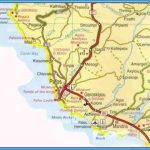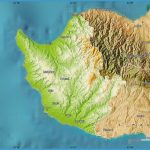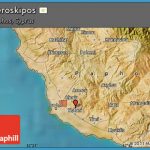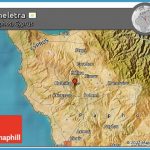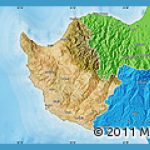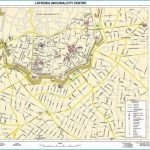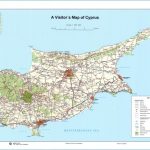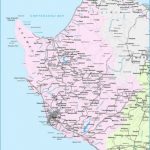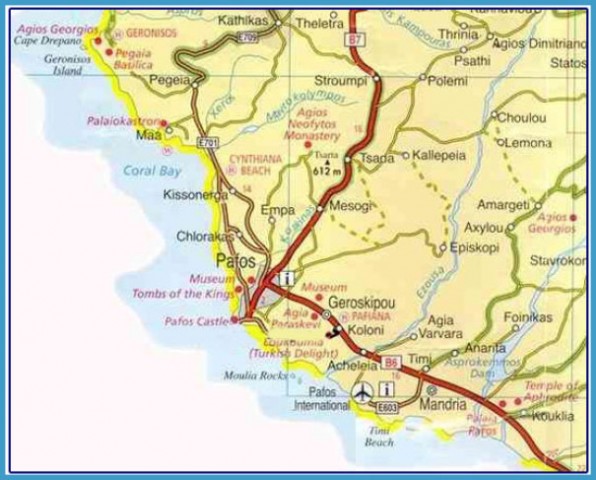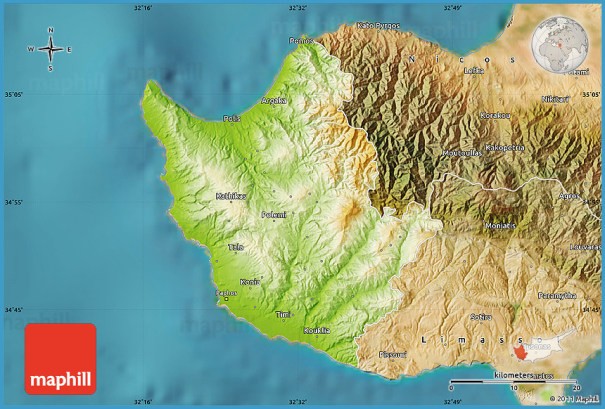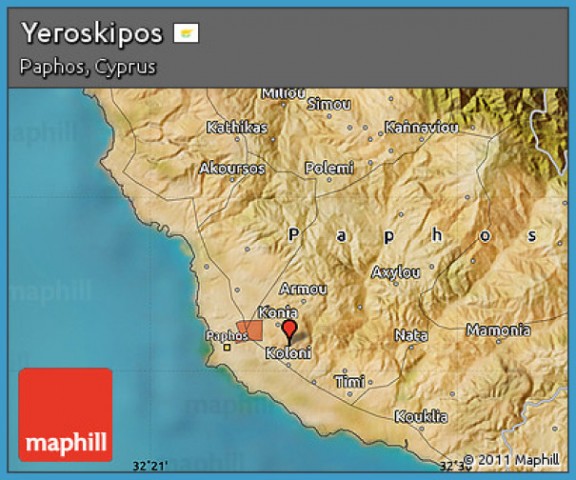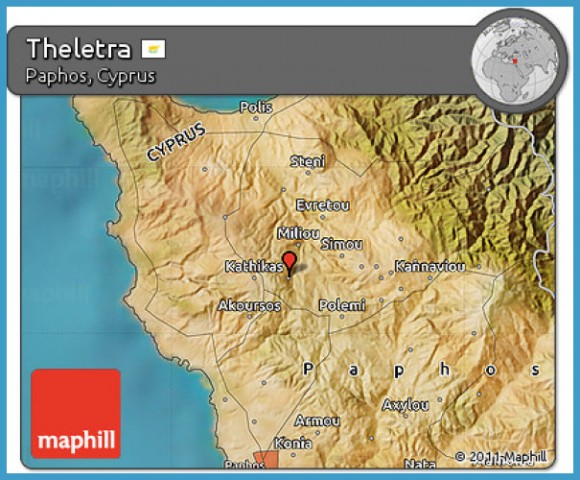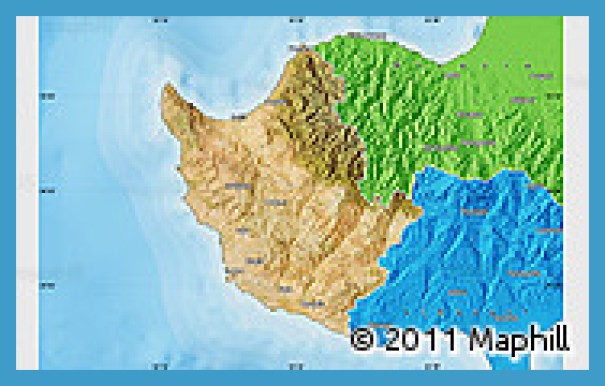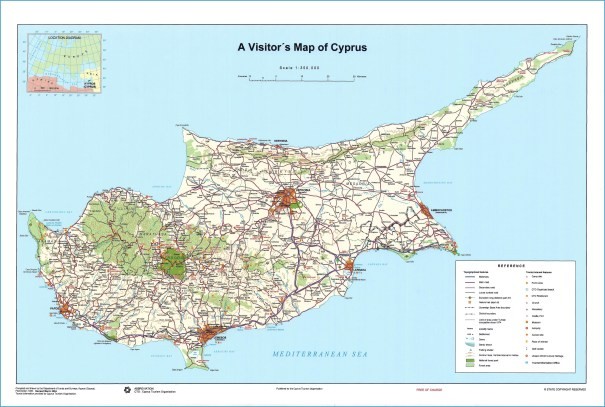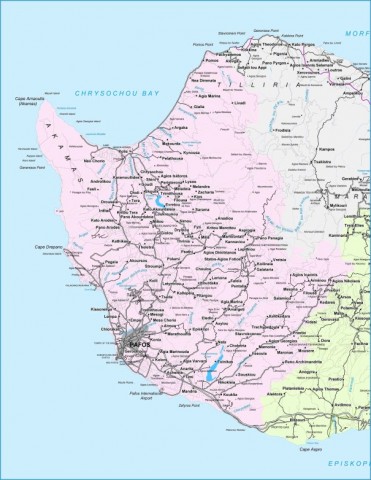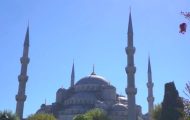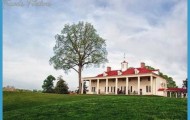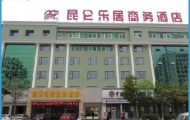OTHER PLACES OF INTEREST
The Pafos Municipal Gardens. The Municipal Gardens lie opposite the schools, the column of 28th October and the Municipal Library. A great variety of trees and shrubs grow next to each other, imparting with their foliage and blossoms beautiful colourings to this green oasis of Pafos. The Pafos Municipal Gardens were early on identified with the celebrations in honour of Costis Palamas, the Greek poet, celebrations which started towards the end of the 1940’s. In 1951, Tombros’ bust of the poet was erected at the western entrance to the Gardens. In the middle of the small Palamas Square there is a copy of the Sleeping Eros, lying in a pool under a domed structure supported by ionic columns.
Satellite map of Paphos Photo Gallery
Neoclassical buildings housing Primary & Secondary Schools
The Town Hall, constructed in 1955, on the Gardens’ northern side, blocks the view of this verdant lung of the city. On the Gardens’ eastern side one can see among others the bust of the first mayor, poet and reformer of Pafos, Chr. Galatopoulos and the bust of the hero, Evagoras Pallikaridis, executed in the Central Prisons for his participation in the Struggle of Liberation (1955-59).
Satellite Map Of Paphos
The column of 28th October with the public library at the background
A Very Impressive Sector of Pafos Town. Between the headquarters of Pafos Police and the central offices of the Cyprus Telecommunications Authority (CYTA), on both sides of Grivas Digenis Ave, lies perhaps the most attractive and culturally most significant sector of Pafos town. Just opposite the Police Station stands the Public Library. In front of the Public Library stands the column of 28th October, in ionic style, erected to commemorate the resistance of the Greeks to the Italian fascism on 28th October 1940. On the left side of Grivas Digenis Ave. as one travels to the offices of the Telecommunications Authority, stand the impressive neoclassical buildings of Demetreion Elementary School founded in 1928, the gate to the Iacoveion Stadium constructed in the decade of 1920, the Nicolaideion Gymnasium built in 1928 and the Gymnasium of Ethnarch Makarios III built in 1960.
Satellite Map Of Paphos Cyprus
Within this cultural sector of Pafos one sees the bust of Solomos, the national poet, in the hononymous Solomos square. Turkish Baths. The Turkish baths, close to the municipal market of Pafos, functioning until the 1950’s, have recently been restored. A few elder Pafians remember the functioning of the baths, before private bathrooms were set up in their own private houses.
Externally the baths are fully restored, while inside they will be functioning as an Information and Exhibition Center for Pafos town.Dasoudi (copse of Pafos). The copse, to the left of the main road from Pafos to Mesogi, has recently been converted into a modern park, with recreational facilities, flower gardens, a small theatre, a space for wider cultural performances as well as all types of other facilities including parking. While many tall pine and cypress-trees have remained intact, other trees and shrubs as well as grass have been planted. A cafeteria is also functioning. The official opening of the park took place in 1993.
Paphos Map & Map of Paphos area. Large, detailed Cyprus Maps
EXPLORING THE COUNTRYSIDE AROUND PAFOS TOWN
a) Settlements at small distance from Pafos town
Route: Konia, Marathounta, Armou, Episkopi, Moro Nero
Entrance to the village of Episkopi
Konia is currently expanding close to the built-up area of Pafos with many urban services lying within its administrative boundaries. On a cliff facing the sea lies the chapel of Pente Agioi (Five Saints): Saints Avxentios, Evgenios, Evstratios, Mardarios and Orestis. Marathounta. The nucleus of the original settlement is associated with traditional houses. Hogarth mentions that at the beginning of the century he saw a limestone plaque devoted to Apollo Myrtatis (of the myrtle). Armou, between Mesogi and
Marathounta, stands on a rise with an abundant view towards Pafos. A limestone bowl has been found in Armou on one side of which there is a dolphin’s head most probably belonging to the Roman era. Perhaps the roots of the village date back to the Roman times. Episkopi. At the village entrance is a high vertical cliff. Agios Ilarion, one of the notable ancient Christian hermits lived between 290-371 A.D. and was a contemporary of Constantine the Great. He spent the last years of his life in Pafos.
When Agios Ilarion arrived in Pafos, he first settled in the ruins of the earthquake-struck town and later led the life of a hermit in Episkopi. When he died, at the age of 80, he was buried in his small garden but his student, Isiochos, who lived with the Saint, stole the tabernacle and took it to Palestine. The cave in which he lived can still be seen today and recently a small chapel was built dedicated to Agios Ilarion. Later on, a small monastery was built at the foot of the high cliff. It was, however, abandoned and a new church took its place. Moro Nero is currently deserted. The village has an arched church dedicated to Agios Ioannis, now with a fallen roof.
Route: Anavargos, Mesa Chorio, Mesogi, Tremithousa, Tala, Agios Neofytos Monastery

